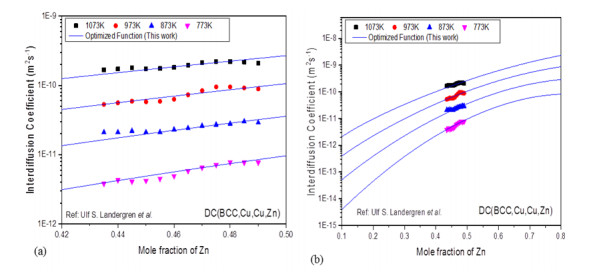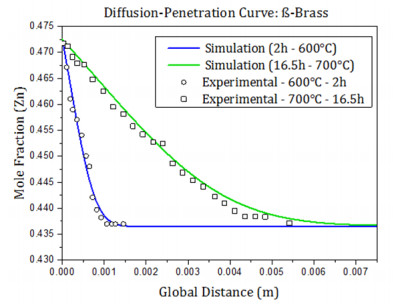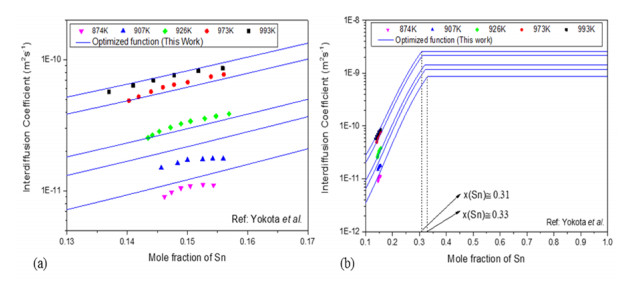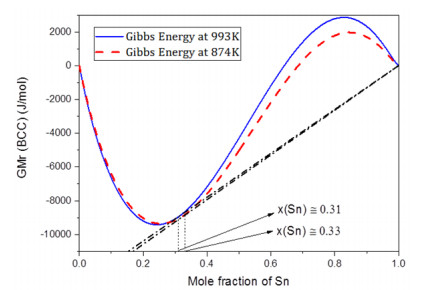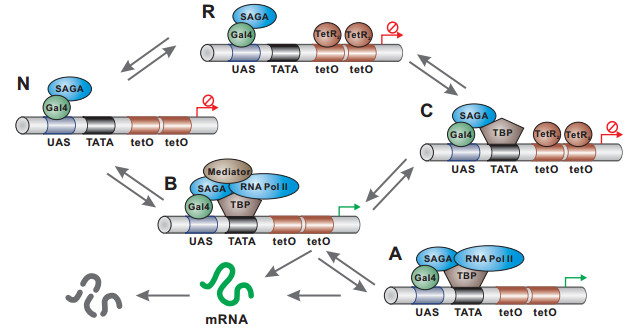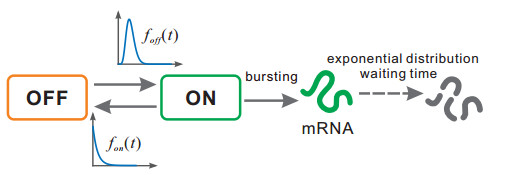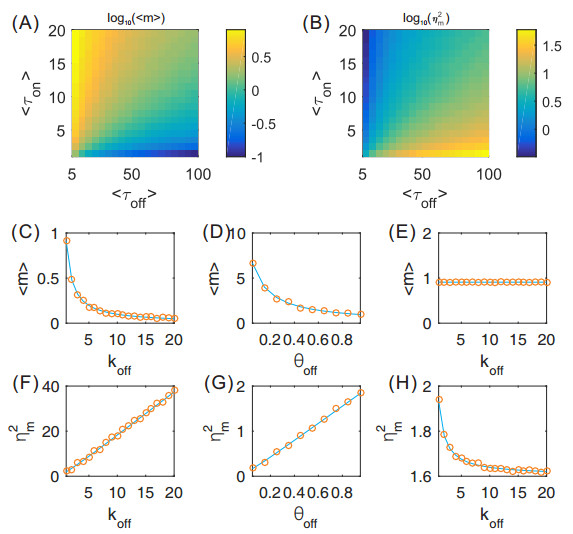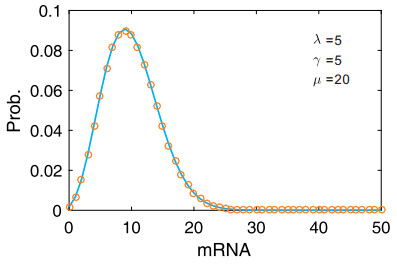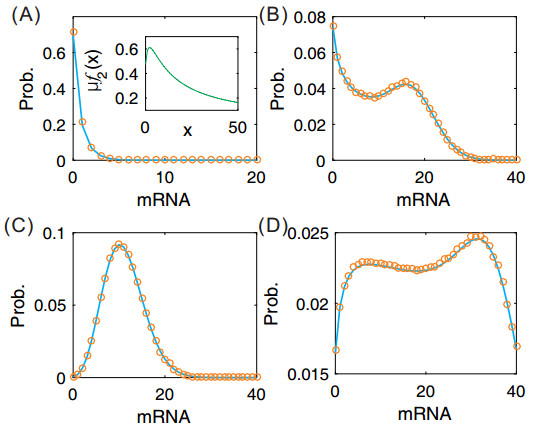|
[1]
|
L. Cai, N. Friedman and X. S. Xie, Stochastic protein expression in individual cells at the single molecule level, Nature, 440 (2006), 358–362.
|
|
[2]
|
J. R. Chubb and T. B. Liverpool, Bursts and pulses: insights from single cell studies into transcriptional mechanisms, Curr. Opin. Genet. Dev., 20 (2010), 478–84.
|
|
[3]
|
D. R. Larson, What do expression dynamics tell us about the mechanism of transcription? Curr. Opin. Genet. Dev., 21 (2011), 591–599.
|
|
[4]
|
A. Sanchez and I. Golding, Genetic determinants and cellular constraints in noisy gene expression, Science, 342 (2013), 1188–1193.
|
|
[5]
|
J. Yu, J. Xiao, X. J. Ren, et al., Probing gene expression in live cells, one protein molecule at a time, Science, 311 (2006), 1600–1603.
|
|
[6]
|
W. J. Blake , M. Karn, C. R. Cantor, et al., Noise in eukaryotic gene expression, Nature, 422 (2003), 633–637.
|
|
[7]
|
J. R. Chubb, T. Trcek, S. M. Shenoy, et al., Transcriptional pulsing of a developmental gene, Curr. Biol., 16 (2006), 1018–1025.
|
|
[8]
|
I. Golding, J. Paulsson, S. M. Zawilski, et al., Real-time kinetics of gene activity in individual bacteria, Cell, 123 (2005), 1025–1036.
|
|
[9]
|
A. Raj, C. S. Peskin, D. Tranchina, et al., Stochastic mRNA synthesis in mammalian cells, PLoS. Biol., 4 (2006), e309.
|
|
[10]
|
H. Boeger, J. Griesenbeck and R. D. Kornberg, Nucleosome retention and the stochastic nature of promoter chromatin remodeling for transcription, Cell, 133 (2008), 716–726.
|
|
[11]
|
C. V. Harper, B. Finkenstadt, D. J. Woodcock, et al., Dynamic analysis of stochastic transcription cycles, PLoS Biol., 9 (2011), e1000607.
|
|
[12]
|
C. Mao, C. R. Brown, S. F. Dong, et al., Quantitative analysis of the transcription control mechanism, Mol. Syst. Biol., 6 (2010), 431.
|
|
[13]
|
L. Mariani, E. G. Schulz, E. Falkovskaia, et al., Short-term memory in gene induction reveals the regulatory principle behind stochastic IL-4 expression, Mol. Syst. Biol., 6 (2010), 359.
|
|
[14]
|
K. Miller-Jensen, S. S. Dey, D. V. Schaffer, et al., Varying virulence: epigenetic control of expression noise and disease processes, Trends Biotechnol, 29 (2011), 517–525.
|
|
[15]
|
J. Raser and E. O'Shea, Control of stochasticity in eukaryotic gene expression, Science, 304 (2003), 1811–1814.
|
|
[16]
|
D. M. Suter, N. Molina, D. Gatfield, et al., Mammalian genes are transcribed with widely different bursting kinetics, Science, 332 (2011), 472–474.
|
|
[17]
|
G. Hager, C. Elbi, T. A. Johnson, et al., Chromatin dynamics and the evolution of alternate promoter states, Chromosome Res., 14 (2006), 107–116.
|
|
[18]
|
T. J. Stasevich and J. G. McNally, Assembly of the transcription machinery: ordered and stable, random and dynamic, or both? Chromosoma, 120 (2011), 533–545.
|
|
[19]
|
L. Weinberger, Y. Voichek, I. Tirosh, et al., Expression noise and acetylation profiles distinguish HDAC functions, Mol. Cell, 47 (2012), 193–202.
|
|
[20]
|
A. Schwabe, K. N. Rybakova and F. J. Bruggeman, Transcription stochasticity of complex gene regulation models, Biophys. J., 103 (2012), 1152–1161.
|
|
[21]
|
W. J. Blake, G. Balázsi, M. A. Kohanski, et al., Phenotypic consequences of promoter-mediated transcriptional noise, Mol. Cell, 6 (2006), 853–865.
|
|
[22]
|
M. Dobrzynski and F. J. Bruggeman, Elongation dynamics shape bursty transcription and translation, Proc. Natl. Acad. Sci. USA, 106 (2009), 2583–2588.
|
|
[23]
|
A. Sanchez, H. G. Garcia, D. Jones, et al., Effect of promoter architecture on the cell-to-cell variability in gene expression, PLoS. Comput. Biol., 7 (2011), e1001100.
|
|
[24]
|
J. J. Zhang, L. N. Chen and T. S. Zhou, Analytical distribution and tunability of noise in a model of promoter progress, Biophys. J., 102 (2012), 1247–1257.
|
|
[25]
|
J. J. Zhang and T. S. Zhou, Promoter-mediated transcriptional dynamics, Biophys. J., 106 (2014), 479–488.
|
|
[26]
|
J. M. G. Vilar and L. Saiz, CplexA: a mathematica package to study macromolecular-assembly control of gene expression, Bioinform, 26 (2010), 2060–2061.
|
|
[27]
|
G. Hornung, R. Bar-Ziv, D. Rosin, et al., Noise-mean relationship in mutated promoters, Genome Res., 22 (2012), 2409–2417.
|
|
[28]
|
A..Halme, S. Bumgarner, C. Styles, et al., Genetic and epigenetic regulation of the FLO gene family generates cell-surface variation in yeast, Cell, 116 (2004), 405–415.
|
|
[29]
|
L. M. Octavio, K. Gedeon and N. Maheshri, Epigenetic and conventional regulation is distributed among activators of FLO11 allowing tuning of population-level heterogeneity in its expression, PLoS. Genet., 5 (2009), e1000673.
|
|
[30]
|
L. Bintu, N. E. Buchler, H. G. Garcia, et al., Transcriptional regulation by the numbers: models, Curr. Opin. Genet. Dev., 15 (2005), 116–124.
|
|
[31]
|
D. Huh and J. Paulsson, Non-genetic heterogeneity from stochastic partitioning at cell division., Nat. Genet., 43 (2011), 95–100.
|
|
[32]
|
T. L. To and N. Maheshri, Noise can induce bimodality in positive transcriptional feedback loops without bistability, Science, 327 (2010), 1142–1145.
|
|
[33]
|
R. Skupsky, J. C. Burnett, J. E. Foley, et al., HIV promoter integration site primarily modulates transcriptional burst size rather than frequency, PLoS. Comput. Biol., 6 (2010), e1000952.
|
|
[34]
|
L. S. Weinberger, J. C. Burnett, J. E. Toettcher, et al., Stochastic gene expression in a lentiviral positive-feedback loop: HIV-1 Tat fluctuations drive phenotypic diversity, Cell, 122 (2005), 169–182.
|
|
[35]
|
Q. L. Wang and T. S. Zhou, Alternative-splicing-mediated gene expression, Phys. Rev. E., 89 (2014), 012713.
|
|
[36]
|
A. Ochab-Marcinek and M. Tabaka, Bimodal gene expression in noncooperative regulatory systems, Proc. Natl. Acad. Sci. USA, 107 (2010), 22096–22101.
|
|
[37]
|
N. Friedman, L. Cai and X. S. Xie, Linking stochastic dynamics to population- distribution: an analytical framework of gene expression, Phys. Rev. Lett., 97 (2006), 168302.
|
|
[38]
|
P. J. Liu, Z. J. Yuan, L. F. Huang, et al., Roles of factorial noise in inducing bimodal gene expression, Phys. Rev. E., 91 (2015), 062706.
|
|
[39]
|
V. Shahrezaei and P. S. Swain, Analytical distributions for stochastic gene expression, Proc. Natl. Acad. Sci. USA, 105 (2008), 17256–17261.
|
|
[40]
|
B. Bodenmiller, E. R. Zunder, R. Finck, et al., Multiplexed mass cytometry profiling of cellular states perturbed by small-molecule regulators, Nat. Biotechnol, 30 (2012), 858.
|
|
[41]
|
N. Rimon and M. Schuldiner, Getting the whole picture: combining throughput with content in microscopy, J. Cell. Sci., 124 (2011), 3743.
|
|
[42]
|
Y. Liu, A Beyer and R. Aebersold, On the dependency of cellular protein levels on mRNA abundance, Cell, 165 (2016), 535–550.
|
|
[43]
|
J. J. Zhang, L. F. Huang and T. S. Zhou, A moment-convergence method for stochastic analysis of biochemical reaction networks, J. Chem. Phys., 144 (2016), 018620.
|
|
[44]
|
L. J. Slater, Confluent Hypergeometric Functions, Cambridge University Press, Cambridge, 1960.
|
|
[45]
|
Y. He and E. Barkai, Super- and sub-Poissonian photon statistics for single molecule spectroscopy, J. Chem. Phys., 122 (2005), 184703.
|
|
[46]
|
J. M. Pedraza and J. Paulsson, Effects of molecular memory and bursting on fluctuations in gene expression, Science, 319 (2008), 339–343.
|
|
[47]
|
L. F. Huang, Z. J. Yuan, P. J. Liu, et al., Feedback-induced counterintuitive correlations of gene expression noise with bursting kinetics, Phys. Rev. E., 90 (2014), 052702.
|
|
[48]
|
J. Paulsson, Models of stochastic gene expression, Phys. Life. Rev., 2 (2005), 157–175.
|
|
[49]
|
J. Peccoud and B. Ycart, Markovian modelling of gene product synthesis, Theor. Popul. Biol., 48 (1995), 222–234.
|
|
[50]
|
J. Tao and R. V. Kulkarni, Intrinsic noise in stochastic models of gene expression with molecular memory and bursting, Phys. Rev. Lett., 106 (2011), 058102.
|
|
[51]
|
T. B. Kepler and T. C. Elston, Stochasticity in transcriptional regulation: origins, consequences, and mathematical representations, Biophys. J., 81 (2001), 3116–3036.
|
|
[52]
|
B. J. Daigle, Jr. M. Soltani, L. R. Petzold, et al., Inferring single-cell gene expression mechanisms using stochastic simulation, Bioinformatics, 31 (2015), 1428–1435.
|
|
[53]
|
B. Zoller, D. Nicolas, N. Molina, et al., Structure of silent transcription intervals and noise characteristics of mammalian genes, Mol. Syst. Biol., 11 (2015), 823.
|
|
[54]
|
L Liu, B. R. K. Kashyap and J. G. C. Templeton, On the GIX/G/∞ system, J. Appl. Probab., 27 (1990), 671–683.
|
|
[55]
|
M. Thattai, Universal Poisson statistics of mRNAs with complex decay pathways, Biophys. J., 110 (2016), 301–305.
|
|
[56]
|
A. R. Stinchcombe, C. S. Peskin and D. Tranchina, Population density approach for discrete mRNA distributions in generalized switching models for stochastic gene expression, Phys. Rev. E., 85 (2012), 061919.
|
|
[57]
|
T. S. Zhou and J. J. Zhang, Analytical results for a multistate gene model, SIAM. J. Appl. Math., 72 (2012), 789–818.
|
|
[58]
|
A. Sánchez, S. Choubey and J. Kondev, Stochastic models of transcription: From single molecules to single cells, Methods, 62 (2013), 13–25.
|
|
[59]
|
J. Garcia-Bernardo and M. J. Dunlop, Phenotypic diversity using bimodal and unimodal expression of stress response proteins, Biophys. J., 110 (2016), 2278–2287.
|
|
[60]
|
D. T. Gillespie, A general method for numerically simulating the stochastic time evolution of coupled chemial reactions, J. Comput. Phys., 22 (1976), 403.
|
|
[61]
|
Q. L. Wang and T. S. Zhou, Dynamical analysis of mCAT2 gene models with CTN-RNA nuclear retention, Phys. Biol., 12 (2015), 016010.
|
|
[62]
|
H. H. Wang, Z. J. Yuan, P. J. Liu, et al., Division time-based amplifiers for gene expression, Mol. Biosyst., 11 (2015), 2417–2428.
|
|
[63]
|
M. Sturrock, P. J. Murray, A. Matzavinos, et al., Mean field analysis of a spatial stochastic model of a gene regulatory network, J. Math. Biol., 71 (2015), 921–959.
|
|
[64]
|
M. Sturrock, S. Li and V. Shahrezaei, The influence of nuclear compartmentalisation on stochastic dynamics of self-repressing gene expression, J. Theor. Biol., 424 (2017), 55–72.
|
|
[65]
|
N. Balakrishnan, N. L. Johnson and S. Kotz, A note on relationships between moments, central moments and cumulants from multivariate distributions, Stat. Prob. Lett. 39 (1998), 49–54.
|
|
[66]
|
N. Kumar, A. Singh and R. V. Kulkarni, Transcriptional Bursting in Gene Expression: Analytical Results for General Stochastic Models, PLoS. Comput. Biol., 11 (2015), e1004292.
|
|
[67]
|
L. Takács, An Introduction to queueing theory, Oxford University Press, New York, 1962.
|
|
[68]
|
H. Xu, S. O. Skinner, A. M. Sokac, et al., Stochastic kinetics of nascent RNA, Phys. Rev. Lett., 117 (2016), 128101.
|









 DownLoad:
DownLoad:
